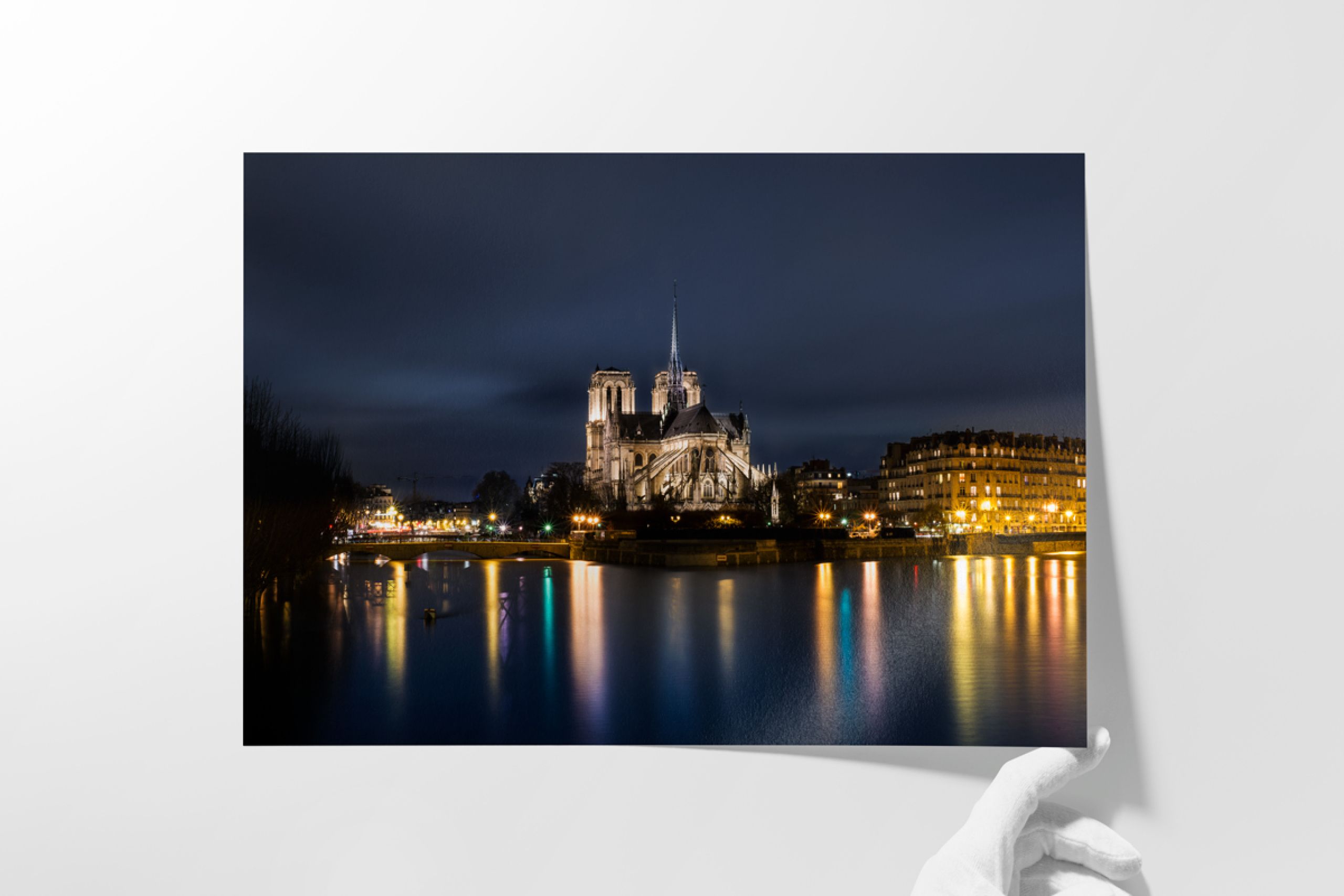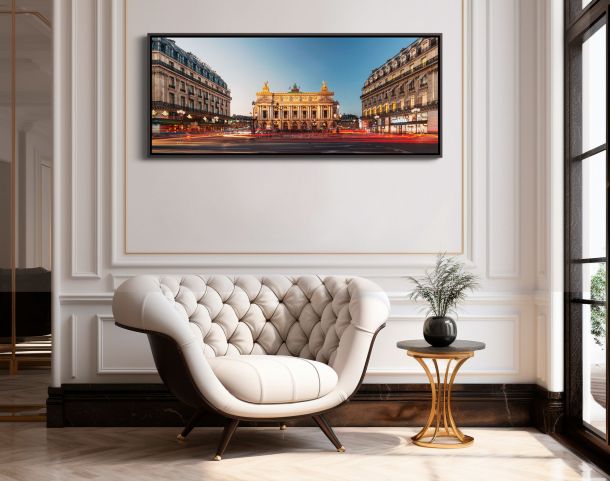Buying a Fine Art Print: The Ultimate Guide to a Smart Investment

Considering purchasing an original artwork but still unsure? This article guides you through the tangible reasons why investing in a fine art print is a smart choice, both for the emotional impact and its economic potential. Learn how to select a limited edition print, what technical criteria to prioritize, and what added value to expect in the fine art photography market. The goal? To turn your interior decor into a true art collection worth appreciating.
Summary
- Emotional and Legacy Value of Fine Art Prints
- Key Criteria for Authentic Fine Art Prints
- Market Dynamics and Investment Potential
- Smart Strategies for Making the Right Choice
Emotional and Legacy Value of Fine Art Prints
A unique print transforms your space, adding both aesthetic and personal dimensions. More than a decorative object, it’s an invitation to live a daily sensory experience. But how do these images truly influence our relationship with space?
Selecting a fine art print means choosing a lifelong companion. Each photograph reveals emotions, subtly shaping the atmosphere of a room.
- Joy and Inspiration: Vivid color prints stimulate creativity and energize the space. Some compositions become true sources of positive energy.
- Serenity and Reflection: A well-chosen print instantly creates a calm oasis. Peaceful landscapes on matte paper, for example, encourage relaxation with their soft, natural finish.
- Nostalgia and Memory: Certain subjects awaken buried memories. Black and white prints are especially powerful for reviving family moments or historically rich places.
- Wonder and Admiration: Large formats like those offered by Hahnemühle capture attention. A limited edition image becomes a window into other worlds.
- Love and Compassion: Prints depicting intimate human scenes quietly remind us of our shared humanity. These decorative choices often strengthen emotional bonds within a home.
By choosing a print that resonates with your personal taste, you’re doing more than buying a product—you are investing in a long-term relationship with the image and its creator.
The appeal of numbered editions also lies in their heritage potential. Take signed limited editions: their controlled rarity and the quality of materials (like cotton paper) make them a smart choice. These photographs, especially when created by renowned artists, often gain value on the secondary market. A fine art print thus becomes both a passion and a thoughtful investment—provided you carefully assess pricing, format, and sales terms before purchasing.
Key Criteria for Authentic Fine Art Prints
Exceptional Papers and Long-Lasting Inks
To preserve the beauty and value of a print over time, the choice of materials is crucial. Opting for high-quality paper combined with stable pigment inks ensures optimal photographic preservation. Hahnemühle papers, for instance, remain a benchmark.
| Paper | Features | Estimated Longevity |
|---|---|---|
| Hahnemühle Photo Rag | 100% cotton, matte surface, acid-free, wide color gamut | 100 years (display) / 200 years (archival) with Digigraphie |
|
Hahnemühle Fine Art
Baryta Paper |
Smooth surface, silver gelatin-like finish, saturated colors, strong contrast | Long-lasting (with pigment ink) |
| Canson Etching Rag 310g | 100% cotton, acid-free, slightly textured surface, natural white | ISO9706 certified (museum quality) |
| Canson Infinity Velin Museum Rag | Aging-resistant, unique fine grain, smooth texture, pure white without optical brighteners | Long-lasting (with pigment ink) |
| Canson Infinity Arches BFK Rives White 310g | Highly resistant to aging, no optical brighteners | Long-lasting (with pigment ink) |
Note: This table compares fine art printing papers by features and estimated longevity. Hahnemühle products are Digigraphie-certified, while Canson options meet museum standards. The final choice depends on desired visual effects and conservation needs.
Museum conservation standards for pigment prints play a key role in image preservation. They limit color deterioration caused by light, humidity, or pollutants. Certifications particularly verify ink stability over time, safeguarding your investment.
Certification and Traceability
Every genuine fine art print should include an authenticity certificate to guarantee its origin. Numbering systems and blockchain certificates provide reliable traceability for buyers. This innovative technology secures limited editions by preventing counterfeiting. Did you know that some premium cotton papers now include built-in security watermarks?
The Role of Initial LABO’s Master Printer
Creating a true fine art print requires expertise and specialized equipment. A professional lab must accurately render the nuances and details of the original image. The photographer works in tandem with a skilled craftsman who masters color calibration and the specifics of each paper. For example, the final look can differ significantly between matte and satin finishes depending on lighting conditions.
Market Dynamics and Investment Potential
The contemporary photography market has shown sustained growth, with a 75% increase in sales over 10 years. This trend reflects the growing interest of collectors and investors in this artistic medium. Investing in a fine art print can be a smart move, provided you understand the sector’s nuances. Prices vary significantly depending on size, paper quality, and the artist’s reputation. Interestingly, despite this growth, some entry-level options remain affordable. So how can you identify emerging photographers whose work might increase in value?
Smart Strategies for Making the Right Choice
Balancing Emotional Impact and Investment Potential
Selecting a fine art print is first and foremost a personal decision, but it can also be a strategic one. The paper and size you choose play a key role in future value. A good method is to combine your aesthetic preferences with objective criteria such as limited editions and high-quality printing materials.
Preferred Acquisition Channels (Galleries vs. Online Platforms)
Before buying, choosing the right seller is essential. Here’s what to check for a worry-free purchase:
- Expertise and market knowledge: Favor galleries that have deep expertise in fine art prints. They should be able to explain photo provenance, cotton printing techniques, and format options.
- Reputation and history: Research pricing and the gallery’s presence in the art world. Reputable galleries often offer framing options as well.
- Transparency: Demand clear pricing and terms. Good professionals always state the number of copies available per edition.
- Artist support: Check if the gallery actively promotes the photographer.
- Presentation and organization: Observe how the artworks are showcased.
- Offered services: The best venues offer preservation and care advice for your prints.
- Legality and compliance: Always verify authenticity certificates.
Following these steps increases your chances of acquiring a quality print at a fair price.
Best Practices for Preservation and Display
After purchasing, choosing where to display your print is key. For optimal results, UV-resistant museum glass best preserves colors. To learn more, discover our personalized advice based on your prints.
In truth, choosing a fine art print goes far beyond interior decoration: it’s a way to enhance your heritage while infusing it with a piece of yourself. More than a passing purchase, this is a long-term investment—emotional as well as financial. So why not choose a piece that will stand the test of time, while leaving a lasting impression on those around you?



